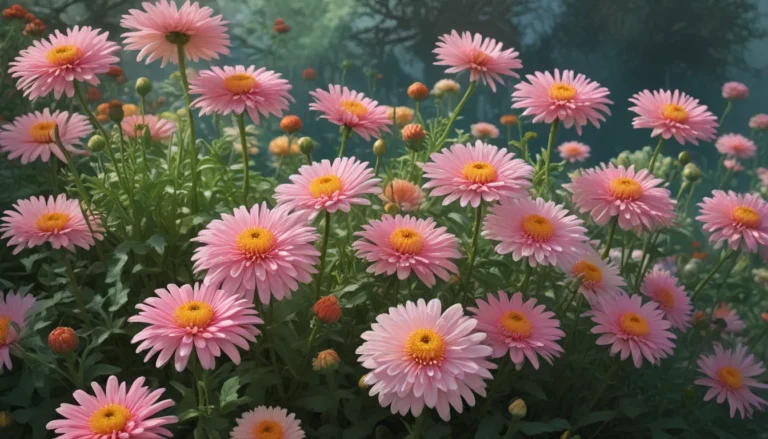The Ultimate Guide to Growing and Caring for English Holly

If you’re a holiday enthusiast who loves the festive feel of “The Holly and The Ivy,” then English holly might be the perfect addition to your garden. With its spiny, glossy green foliage and vibrant red berries, this classic holiday shrub is native to Europe, North Africa, and Western Asia.
In this comprehensive guide, we’ll walk you through everything you need to know about cultivating and maintaining English holly. From propagation to pruning, we’ve got you covered with valuable information to help you successfully grow this iconic plant. So grab a cup of tea, settle in, and let’s dive into the world of English holly!
What Is English Holly?
English holly, scientifically known as Ilex aquifolium, is a flowering evergreen that belongs to the Aquifoliaceae family. This dioecious plant produces separate male and female flowers, with only the female plants bearing the distinctive red berries that are a hallmark of the species.
The glossy, dark green leaves of English holly are accented by spiny thorns, making it a prized addition to holiday decorations. The plant also produces white, scented flower clusters in spring and early summer, attracting pollinators and songbirds.
A Note of Caution:
While English holly berries are attractive to birds, they are toxic to humans and pets if ingested. It’s important to exercise caution and prevent consumption of any part of the plant.
Cultivation and History
English holly has a rich history steeped in folklore and tradition. From ancient pagan customs to modern-day commercial cultivation, this iconic plant has always held a special place in holiday celebrations.
According to historical accounts, holly was associated with themes of renewal and protection in various cultures. The plant’s thorny leaves were believed to ward off evil spirits and symbolize religious significance through its association with Christmas traditions.
Propagation
Growing English holly from seed can be a challenging and time-consuming process. Instead, consider propagating the plant from cuttings for a more reliable and efficient method.
From Cuttings
- Select healthy new growth stems for cuttings.
- Strip the lower leaves and bark to promote rooting.
- Dip cut ends in rooting hormone and plant in prepared pots.
- Provide a warm, indirect sunlight location for rooting.
- Transplant rooted cuttings into larger containers once established.
By following these steps, you can propagate English holly successfully and ensure a steady supply of plants for your garden.
How to Grow
When growing English holly, it’s essential to consider the plant’s light, soil, and water requirements to promote healthy growth. Here are some tips for cultivating this iconic shrub:
- Plant at least one male holly for every eight females to ensure berry production.
- Provide protection from winter winds and afternoon shade in warmer climates.
- Plant in well-draining, acidic soil with a pH between 3.5 and 6.8.
- Water deeply in the absence of rain, especially during the establishment phase.
By following these guidelines, you can create an ideal environment for English holly to thrive and flourish in your garden.
Pruning and Maintenance
Regular pruning and maintenance are essential for shaping and caring for your English holly plants. Here are some key tips to keep in mind:
- Prune annually in late winter to remove dead or unruly branches.
- Use sharp loppers and protective gear to avoid scratches from spiny leaves.
- Provide ample spacing to prevent overcrowding and promote airflow.
- Monitor for pests and diseases, removing affected foliage promptly.
By incorporating these practices into your routine care regimen, you can ensure that your English holly plants remain healthy and vibrant year-round.
Cultivars and Hybrids to Select
When choosing English holly cultivars, consider both berry-producing and variegated options for a stunning landscape display. Here are some popular selections to consider:
- Argentea Marginata: A variegated cultivar featuring dark green leaves with white edges and scarlet berries.
- Dragon Lady: A hardy hybrid with abundant red berries and a narrow growth habit.
- Royal Family Holly Combo: A cold-hardy hybrid pair featuring ‘Blue Princess’ and ‘Blue Prince’ for compact growth and colorful berries.
By selecting the right cultivars for your garden, you can enjoy the beauty and diversity of English holly with ease.
Managing Pests and Disease
While English holly is relatively pest and disease-resistant, there are a few common issues to watch out for. Here are some key pests and diseases to be aware of:
- Holly Leaf Miners: Larvae that create blotches on leaves, typically removed by hand or with specialized treatments.
- Scale: White blobs that may appear on branches, controlled with manual removal or insecticidal sprays.
- Spider Mites: Tiny insects that form webs on leaves, treated with neem oil or other natural remedies.
By monitoring your plants regularly and addressing any pest or disease issues promptly, you can prevent significant damage and maintain the health of your English holly plants.
Best Uses
English holly plants can serve a variety of purposes in your garden, from specimen trees to decorative accents. Here are some popular uses for this iconic shrub:
- Borders: Create a lush green border or hedge with English holly plants for a formal and elegant look.
- Cut Arrangements: Harvest sprigs and boughs for festive winter decorations, wreaths, and floral arrangements.
- Specimen Trees: Allow English holly plants to grow tall and majestic as standalone trees to make a bold statement in your landscape.
Whether you’re looking to add structure, color, or holiday cheer to your garden, English holly offers a versatile and visually striking option for your landscape needs.
Conclusion
In conclusion, English holly is a charming and iconic plant with a rich history and versatile nature. By following the tips and guidelines outlined in this comprehensive guide, you can successfully grow and care for this classic shrub in your garden.
From propagation to pruning, pest management to cultivar selection, we’ve covered all the essential information you need to cultivate healthy and vibrant English holly plants. So roll up your sleeves, grab your gardening tools, and get ready to bring a touch of holiday magic to your garden with English holly!
Feel free to share your experiences, questions, or feedback in the comments below. We’d love to hear from you and continue the conversation about growing and caring for English holly in your garden.
Remember, with proper care and attention, your English holly plants will thrive and delight you with their beauty and timeless charm. Happy gardening!





